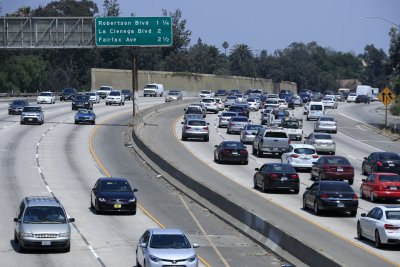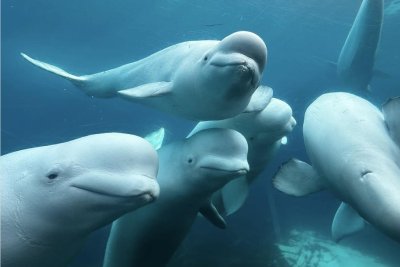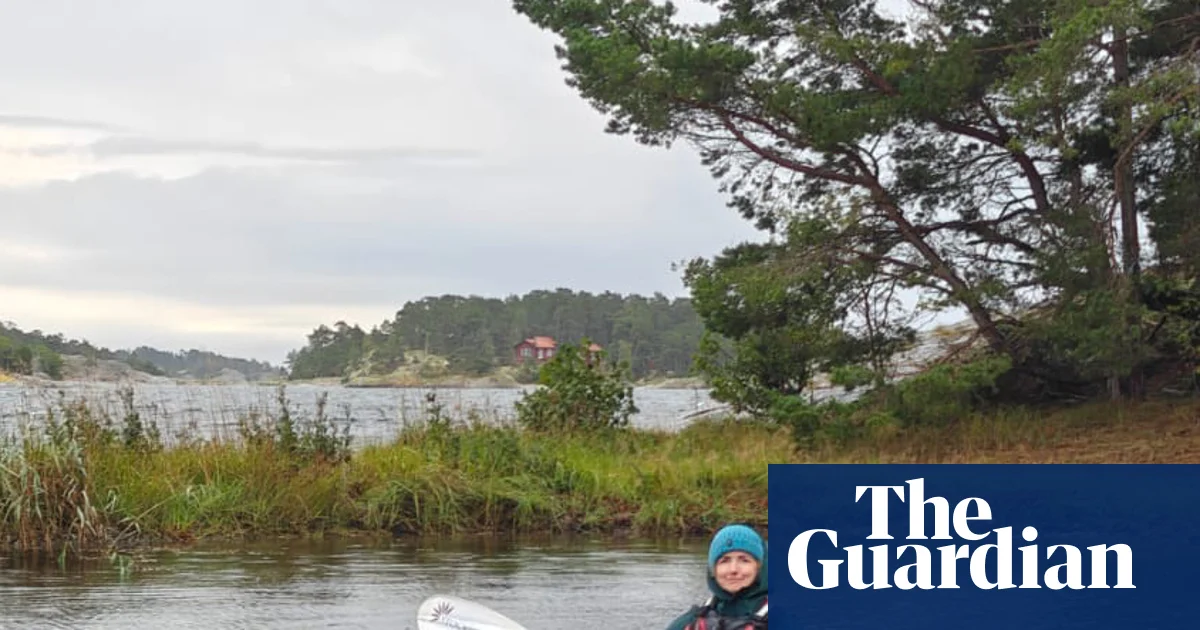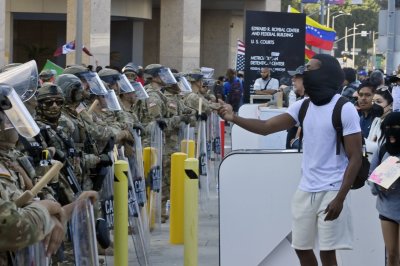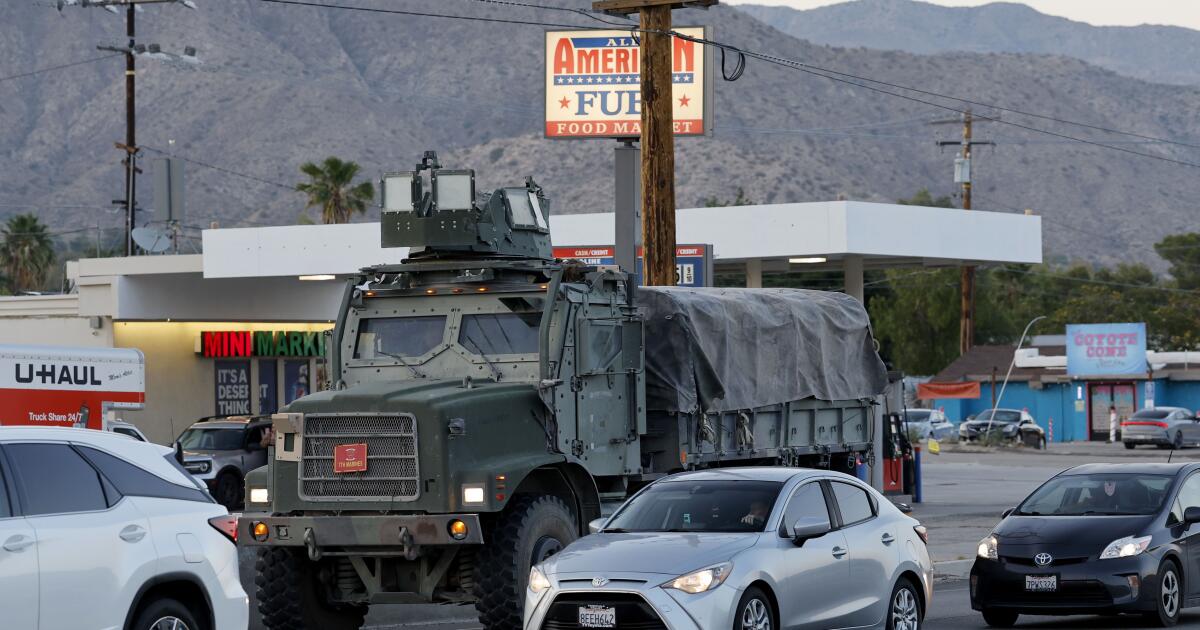United States President Donald Trump has ordered the deployment of Marines in Los Angeles to quell protests that have erupted against the arrests of 44 people on Friday for violating immigration laws.
Trump on Monday also doubled the strength of National Guard forces that his administration has deployed in the country’s second largest city to 4,000 soldiers.
His administration has justified the deployments by arguing, in part, that local authorities were failing to ensure the safety of law enforcement officials and federal property.
But the deployment of the Marines – coming on the back of the move to send the National Guard to Los Angeles – has sparked criticism, not just from Trump’s political opponents like California Governor Gavin Newsom but also from the Los Angeles police.
The Los Angeles Police Department (LAPD) has said the deployment of Marines will make its job harder. Here’s what the dispute is about, and why the LAPD argues that the deployment of military forces could complicate its work:
What are the US Marines?
The Marines are a branch of the US armed forces and are a component of the Navy. The Marine Corps was first established in 1775.
Its soldiers are trained for land and sea operations and have a particular focus on amphibious warfare, which refers to attacks launched from ships onto shore.
US citizens or legal residents who have a high school diploma and are aged 17 to 28 are eligible to enlist for the Marines. They have to undergo an initial strength test to be recruited. Recruits undergo about 13 weeks of initial training to become a part of the Marine Corps. Once a year, each Marine undergoes a battle-readiness test with a focus on physical readiness and stamina.
There are 172,577 active duty Marine personnel in the US as well as 33,036 reserve personnel as of 2023, the latest data released by the US Department of Defense.
What is the Marine deployment?
The US military’s Northern Command released a statement on Monday saying it had activated a Marine infantry battalion in Los Angeles that was on alert over the weekend. About 700 Marines with the 2nd Battalion, 7th Marines and 1st Marine Division will “seamlessly integrate” with National Guard troops deployed in the city, it said.
Initially, the LAPD was involved in quelling civil unrest due to the protests, starting on Friday. On Saturday, Trump deployed about 2,000 National Guard soldiers to Los Angeles County, defying objections by Newsom and Los Angeles Mayor Karen Bass.
After the Marine deployment announcement, Pentagon spokesperson Sean Parnell said an “additional” 2,000 National Guard soldiers would also be mobilised in addition to the 2,000 who had been sent to the city over the weekend.
What did the LAPD say about the Marine deployment?
On Monday, Police Chief Jim McDonnell released a statement saying the LAPD had not received a formal notification that the Marines would be coming to LA.
“The possible arrival of federal military forces in Los Angeles absent clear coordination presents a significant logistical and operational challenge for those of us charged with safeguarding this city,” he said.
McDonnell added that the LAPD and its partners “have decades of experience managing large-scale public demonstrations, and we remain confident in our ability to do so professionally and effectively”.
The LAPD boss urged open and continuous communication between all law enforcement agencies involved to avoid confusion and escalation.
What does the LAPD mean by this?
History indicates that a lack of communication, coupled with differences in approach based on different agencies’ training, can inflame already tense situations that law enforcement officials confront.
While the US routinely sends its Marines on overseas missions, it is rare for the US president to deploy Marines to quell a domestic crisis.
The last time this happened was in 1992 in Los Angeles during protests against the acquittal of four policemen who had been filmed beating Rodney King, a Black man. Six days of riots broke out, and 2,000 National Guard soldiers and 1,500 Marines were deployed in the city. The riots in 1992 resulted in the deaths of 63 people and widespread looting, assaults and arson, unlike the ongoing protests, which have been largely peaceful.
On one occasion in 1992, LAPD officers and Marines were called to respond to a domestic disturbance at a local home.
When they arrived, a shotgun was fired out the front door. A police officer yelled, “Cover me,” which to the police means to prepare to shoot if necessary but to hold one’s fire. For Marines trained for combat, “cover me” means to use firepower. The Marines shot more than 200 bullets instantly as a response to the officer. Three children were inside the home at the time. While no one was killed, federal soldiers were withdrawn from Los Angeles shortly after this.
While the deployment of US Marines to Los Angeles in 1992 was carried out in coordination with state and local authorities, they are now being sent against the wishes of the state government, Bass and the LAPD.
That compounds the risks that could follow, experts said.
“If the administration escalates to active duty troops, especially without coordination with state leaders, it would amount to a militarization of civilian protest, not a restoration of order,” attorney Robert Patillo said in a written statement to Al Jazeera. “That move could violate the First Amendment rights of peaceful protesters and would likely inflame tensions on the ground, not resolve them.”
The First Amendment of the US Constitution guarantees the freedom of speech and assembly.
Is the Marine deployment necessary?
Reports from LA suggest that the National Guard troops who have been activated are barely being used in the city, raising questions about whether the deployment of Marines or additional National Guard soldiers is really necessary.
Al Jazeera’s Rob Reynolds, reporting from LA, said Monday’s protests organised by unions in the city centre were peaceful.
“[The National Guard] didn’t engage with the protesters. They didn’t do much of anything other than stand there in their military uniforms,” Reynolds said.
On his personal X account, Newsom posted that the initial 2,000 National Guard soldiers were not given food or water. Of them, only 300 were deployed while the rest were sitting in federal buildings without orders, he said. Al Jazeera could not independently verify this.
In another post, Newsom wrote that “the Secretary of Defense is illegally deploying [the Marines] onto American streets.”
On Monday, Newsom announced that he had filed a lawsuit against Trump and Defense Secretary Pete Hegseth “to end the illegal takeover” of the National Guard. Trump’s federalisation of the National Guard on Saturday marked the first time in 60 years that a US president has activated the guard in defiance of a state governor’s wishes.
“For Trump to deploy regular armed forces, such as the marines, would require him to clear another legal hurdle. He would have to invoke the Insurrection Act, which is very rare and would escalate the situation to a constitutional crisis,” Gregory Magarian, professor of law at Washington University’s School of Law in St Louis, Missouri, told Al Jazeera in an emailed statement.
So far, it is unclear whether Trump invoked the Insurrection Act to deploy the Marines. To activate the National Guard, he did not invoke the Insurrection Act but a similar federal law, Title 10 of the United States Code.
“While the Insurrection Act technically gives the president the authority to deploy active-duty military forces under extreme conditions, we are nowhere near the legal threshold that would justify sending in the marines,” Patillo said.
What is the Trump administration saying?
Hegseth wrote in an X post that Marines had been deployed “due to increased threats to federal law enforcement officers and federal buildings”.
“We have an obligation to defend federal law enforcement officers – even if Gavin Newsom will not,” Hegseth wrote.
Homeland Security Secretary Kristi Noem said in an X post on Monday that Immigration and Customs Enforcement officials, who have been leading the immigration arrests, will “continue to enforce the law” despite the protests.
What is the latest update on the LA immigration protests?
Over the weekend, the LAPD arrested 50 protesters: 29 on Saturday and 21 on Sunday.
Local news outlets have reported protests against the arrests have also begun in at least nine other US cities, including New York, Philadelphia and San Francisco.
